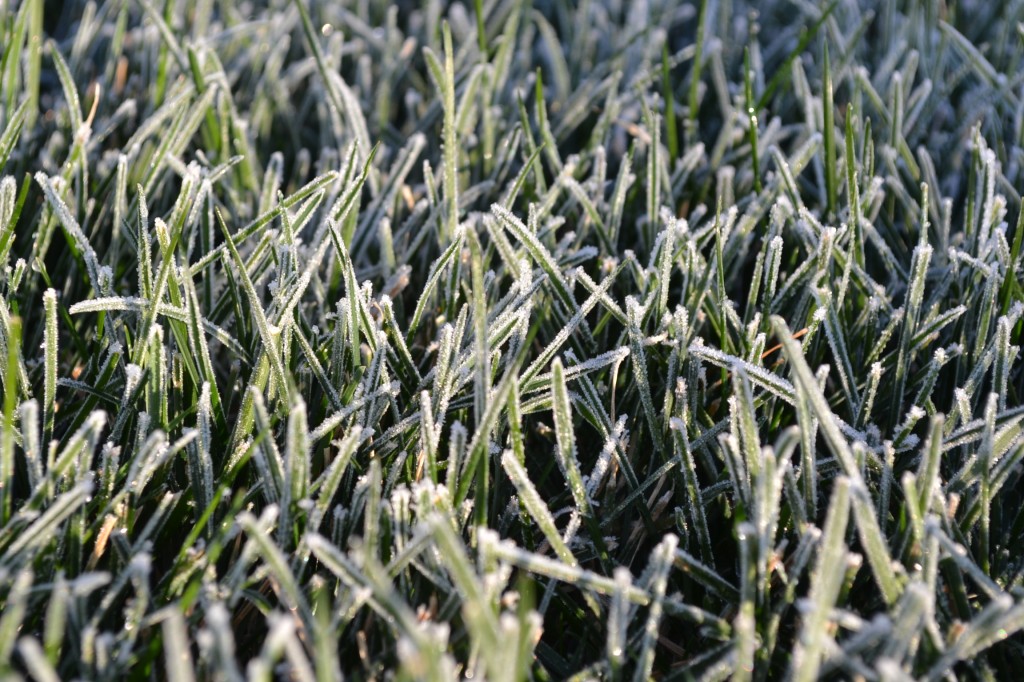Fall frost on grass blades, it is a sure sign that fall is here and winter is quickly approaching. Fall frost on grass marks the end of summer and lets us know that winter is quickly approaching. If you have frost on your grass, make sure to stay off of your lawn until the frost is gone. If you walk or drive equipment over your frozen grass blades, you may cause damage to them. Since grass is 90% water, cooler temperatures below 32 degrees may temporarily freeze your grass blades. If you walk or drive equipment over frozen grass blades, you may cause the grass plant to die out. You can break a frozen grass-blade easily. Broken or damaged grass blades are not able to absorb nutrients as well and may discolor or die.
How to help your lawn recover from the fall frost.
Make sure that your grass blades receive adequate water so that they are more flexible. Thin, stressed grass plants are more susceptible to frost damage. Most lawns should receive about 3/4 of an inch of water per week during the growing season. Anything less may encourage damage to be caused by frost on grass.
Make sure that your grass is receiving adequate nutrients. Apply a winterizer fertilizer to your lawn in early fall to help boost the health of your grass. Healthier grass will be able to tolerate potentially damaging frost. Making sure that your lawn has a good balance of nutrients will help strengthen the over all structure of the grass plant. Tougher grass plants will rebound from damage quicker than grass plants that are week.
Over seeding may be necessary if you have substantial die out from fall frost. Severe damage caused by frost on grass is rare in Iowa lawns, but the potential is always there. Most frost damage to Iowa lawns is caused by someone walking on the frozen grass plants.

